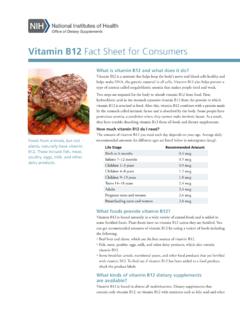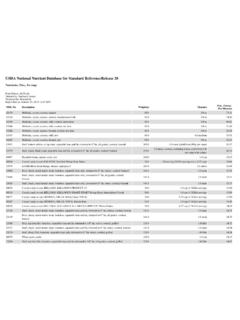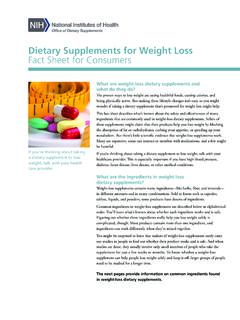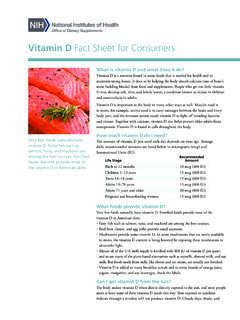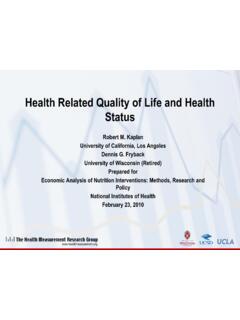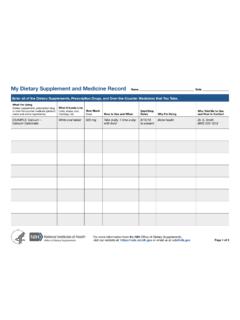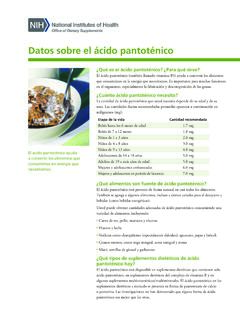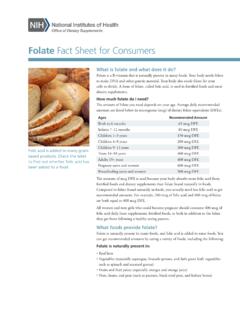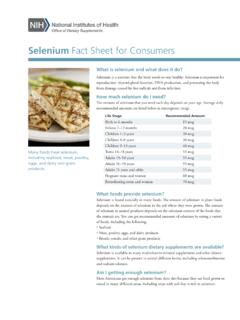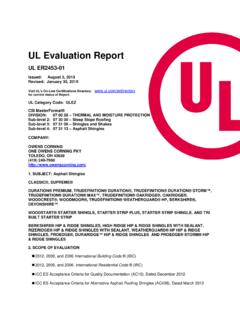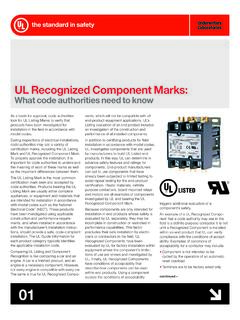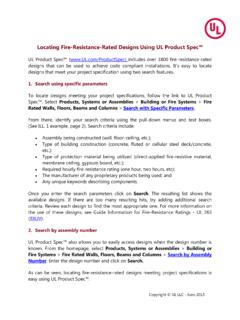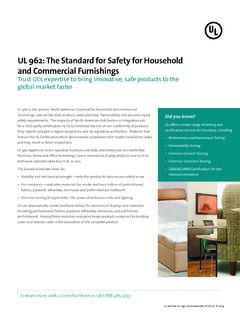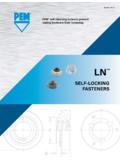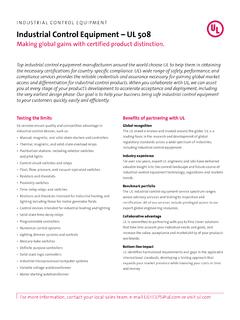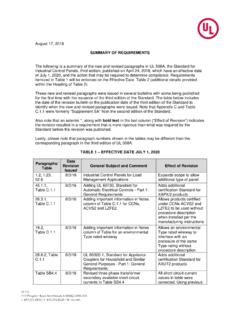Transcription of TOLERABLE UPPER INTAKE LEVEL (UL)
1 TOLERABLE UPPER INTAKE LEVEL (UL). The highest LEVEL of nutrient INTAKE that is likely to pose no risk of adverse health effects for almost all individuals in the general population. As INTAKE increases above the UL, the risk of adverse effects increases. AGENTS THAT ARE POTENTIAL. SOURCES OF FOOD-RELATED RISKS. [1] Natural Constituents Nutrients Non-nutrients [2] Substances Intentionally and Directly Added [3] Substances Indirectly Added Pesticides Indirect Food Additives [4] Contaminants Naturally Occurring Chemicals Industrial Products, By-products Biological Agents RISK ASSESSMENT INVOLVES SYSTEMATIC. ORGANIZATION AND EVALUATION OF DATA. The Agent Population(s) Exposed to the Agent Hazards - What adverse effects? Exposure -What dose, duration? Dose-Response -How is dose distributed? -How do severity, incidence of adverse effects change with dose? Risk Characterization What is likelihood that exposed populations will experience adverse effects?
2 How certain? HAZARDS OF CHEMICAL AGENTS. Many Forms of Toxicity Vary With the Chemical, Its Dose, and the Duration of Exposure Toxicity Expressed When Threshold Dose Is Exceeded Thresholds Vary Among Individuals Carcinogens May Not Exhibit Thresholds DEVELOPMENT OF TOLERABLE . UPPER INTAKE levels (ULs). Components of Hazard Identification Evidence of adverse effects in humans Causality Relevance of experimental data Pharmacokinetic and metabolic data Mechanisms of toxic action Quality and completeness of the database Identification of distinct and highly sensitive subpopulations DEVELOPMENT OF TOLERABLE . UPPER INTAKE levels (ULs). Components of Dose-Response Assessment Data selection and identification of critical endpoints Identification of no-observed-adverse-effect LEVEL (NOAEL) (or lowest-observed-adverse-effect LEVEL [LOAEL]). Assessment of uncertainty and data on variability in response Derivation of a UL. Characterization of the estimate and special considerations UNCERTAINTIES.
3 Limitations in available HUMAN STUDIES. Limitations in and relevance of EXPERIMENTAL. DATA. Estimating Threshold (UL) for Large, Diverse Human Population VARIABILITY IN RESPONSE. ANIMAL-HUMAN DIFFERENCES. UNCERTAINTY FACTORS ARE USED TO DEAL WITH. THESE & OTHER UNCERTAINTIES. TOLERABLE UPPER INTAKE levels (ULs). BY LIFE STAGE GROUP. Vitamin C -Tocopherol Selenium Life Stage Group (mg/d) (Mg/d) ( g/d). 0 through 6 mo ND ND 45. 7 through 12 mo ND ND 60. 1 through 3 y 400 200 90. 4 through 8 y 650 300 150. 9 through 13 y 1,200 600 280. 14 through 18 y 1,800 800 400. 19 through 70 y 2,000 1,000 400. >70 y 2,000 1,000 400. Pregnancy #18 y 1,800 800 400. 19 through 50 y 2,000 1,000 400. Lactation #18 y 1,800 800 400. 19 through 50 y 2,000 1,000 400. Risk of of Adverse Effects Risk of Inadequacy UL. 0 0. Observed LEVEL of INTAKE Distribution of Usual INTAKE Population Potentially at Risk Mean UL. INTAKE Distribution Usual Intakes Distribution Usual Intakes Population Potentially at Risk (Diet and Supplement).
4 Mean Mean UL. (Diet Only) (Diet and Supplement). INTAKE Population Usual INTAKE Distribution Dose-Response Relationship For Adverse Effects UL NOAEL LOAEL. Intak
